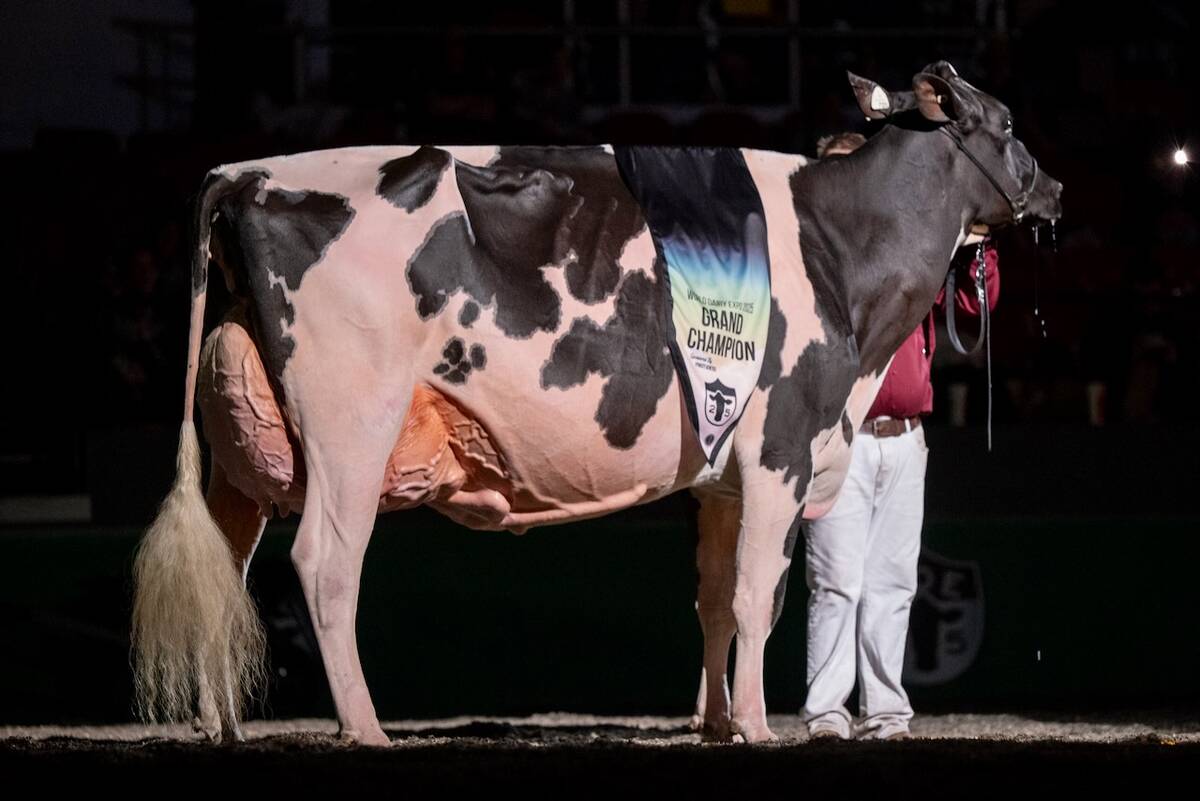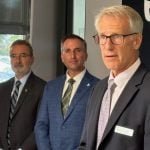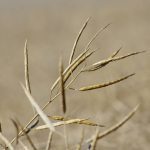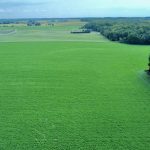CALGARY — There’s a lot of theory surrounding precision agriculture but the practice is about results.
Stewart Maschmeyer, Jason Kehler and Josh Fankhauser use some of the technology on their farms and have found it has delivered on some of its promise.
Speaking at the Feb. 22 Precision Ag 2.0 conference, Jason Kehler of Carman, Man., said variable rate fertilizer (VRF) operations have improved his bottom line at a cost of $6 to $7 per acre.
“It’s really been improving our yields and as far as cost goes, yes, it’s an investment. But what in farming isn’t? We spend a lot of money on a lot of other things that probably don’t pay back as well.”
Read Also

Canadian-bred cow wins World Dairy Expo Holstein show
A cow bred in Saskatchewan, Lovhill Sidekick Kandy Cane, is the Grand Champion Holstein at the 2025 World Dairy Expo.
Kehler grows potatoes, cereals and oilseeds on his Red River Valley area farm. He saw lots of production variability in his light soil and figured variable rate application had potential.
Five years ago, he started using the technology on his potatoes, where he still sees the greatest benefit in terms of quality product for the processing market.
In years past, quantity was the goal for both potato growers and processors but that has changed. So Kehler changed too.
“It’s gotten to where quality has surpassed quantity (for processors’ needs.) Obviously, a yield goal is always important but it’s gotten to where, if we don’t have a consistent product for them to work with, it’s pretty hard to empty the sheds.”
He began VRF with one irrigation circle of potatoes. The improvements in potato quality were immediate.
“As our experience grew with the potatoes, I moved the VR program into our other crops,” said Kehler.
The ability to vary nitrogen applications in particular has improved profitability. He got a yield monitor only last year and has been impressed with the data.
“It’s really amazing to see how our yield maps correlate with these soil zones done with satellite imagery. It’s almost uncanny.”
Kehler said several years of VRF use are evening out the fertilizer needs in his fields, but that doesn’t mean he uses less product.
“As far as cost savings … I wouldn’t say my goal would ever be to save money on fertilizer…. Generally you’re going to spend just as much or more money on fertilizer. You’re just going to put it where it needs to be.”
Fankhauser farms 7,000 acres, along with his father and uncles, near Claresholm, Alta. He began his precision farming experience with light bar guidance and autosteer.
Now the farm uses precision agriculture technology widely and also conducts extensive field-scale plot trials. Those trials would be difficult without RTF technology and other precision instruments.
“I use GPS for everything,” Fankhauser told the group. “It’s a record keeping tool more than a steering tool. Steering is nice. Record keeping is better.”
Though he did not discuss changes to the bottom line as a result of precision ag use, he did say it allows the farm to easily test changes to inputs before implementing them in a bigger way.
“I don’t have to take the chemical rep’s word. They’re not trying to mislead you but they have to make broad recommendations about this chemical,” he said, and those might not suit his farm.
Fankhauser also praised yield monitors as a tool.
“Yield mapping is the most important thing. If you have nothing else, get yield mapping,” he said.
That technology is vital to his field fertilizer trials, which this year involved 28 plots, each 120 feet wide by one-quarter mile long. He said the trials were easily run because of pre-planning and using precision farming tools and software available for variable rate applications and record keeping.
Maschmeyer said he first heard the term “precision agriculture” in the early 1990s and in one respect things haven’t changed for him.
“As I left that seminar, I had no idea of knowing that the challenge before me that day would be same over 20 years (later) — what do I do with this information?”
Maschmeyer farms about 5,000 acres near Bruderheim, Alta., and had collected years of yield data from his farm. It showed major production variability in his fields.
Last year he used variable rate fertilizer technology at seeding, starting with 1,000 acres. He used previous years of satellite imagery coupled with aerial photos, his own knowledge about his land and assistance from Agri-Trend personnel to map out zones.
He also used Veris equipment to map the electrical conductivity of his land, which gave an accurate picture of soil type in those zones.
He used that information to apply variable rates of fertilizer according to specific field needs.
Maschmeyer has set a goal of 60 bushels per acre of canola, except in one highly productive field where his goal is 80. Variable rate fertilizer application will be used to push the yield envelope, he said.
The central Alberta farmer praised GPS and autosteer technology, which has eliminated seeding overlap and the lodging that tended to result in his cereal crops.
Last year he also invested in RTK technology to better pinpoint field position to allow inter-row seeding of canola on cereal stubble.















